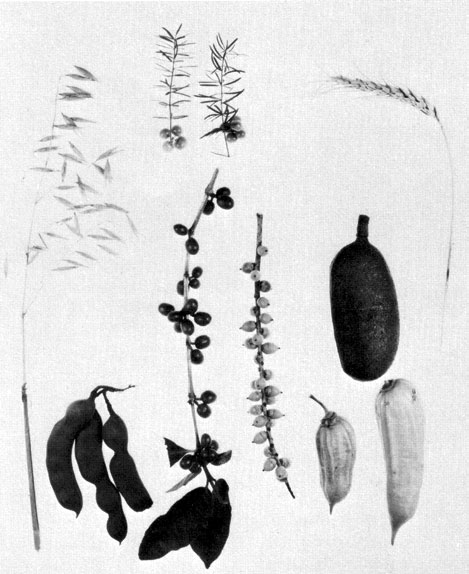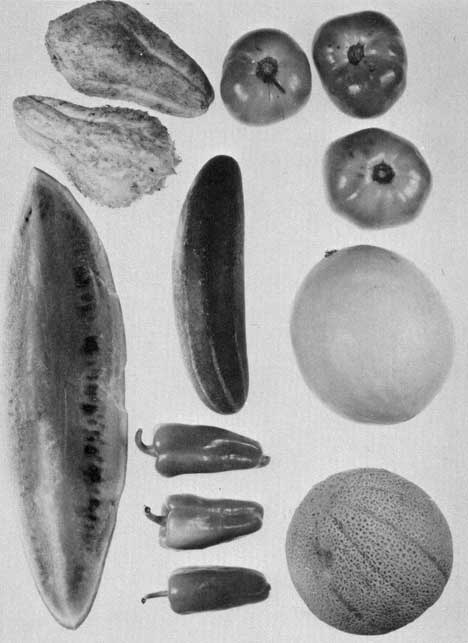1. Introduction
|
No class of foods has as much general appeal as
fruits. Although they are sometimes rich in vitamins, minerals, oils,
starches, and even proteins, fruits are seldom consciously eaten for their
nutritional value but for their beauty, texture, aroma, juiciness, and
refresh-ing flavor. Fruits are usually not the main course. They are the
desserts or the foods to be nibbled or devoured between meals.
How many species of fruits are there in the Tropics?1 In our opinion there are thousands. Of these, 300 are major and 100 are excellent, but perhaps only 50 are already well known. Many tropical fruits are unknown to the temperate palate, and there are many still known in only a small part of the Tropics. There remains an immense task to know, to culture, to improve, to show, and to share tropical fruits with the world. 
Figure 1. - Botanical fruits of several kinds.
__________________________________________ 1We define the Tropics as that
area between the Tropic of Cancer and the Tropic of Capri-corn (the Torrid
Zone) with warm day and night temperatures throughout the year. For our
purpose we include adjacent areas in the Temperate Zone with this climate
(the sub-tropics), and we include highlands with temperate climates in
the Torrid Zone.
|
What Is a Fruit? In the botanical sense, all flowering plants (mono-cotyledons and dicotyledons) produce fruits (fig. 1). These are the results of reproductive growth, generally the structures developed from flowers or from clusters of flowers. Fruits may be only the reproductive organs of the plant or may include other parts of the flower, such as the receptacle, sepals, and pedicel. We use the word "fruit" in a more restrictive and popular sense. We consider only edible fruits of tropical or subtropical origin. We do not include in this inventory certain Temperate Zone fruits grown in restricted areas of the Tropics, such as apples, peaches, and pears and their many relatives. Temperate Zone fruits in the Tropics are generally out of place and insignificant in their impact. But having said this, we realize that certain Temperate Zone fruits-grapes, for example-can be adapted to the Tropics, and we have included such selections. We have further limited our selection to perennials. Thus, we do not consider the family Cucurbitaceae (fig. 2), although many have sweet fruits occupying the 
Figure 2.-Fruits of annual herbaceous plants. |